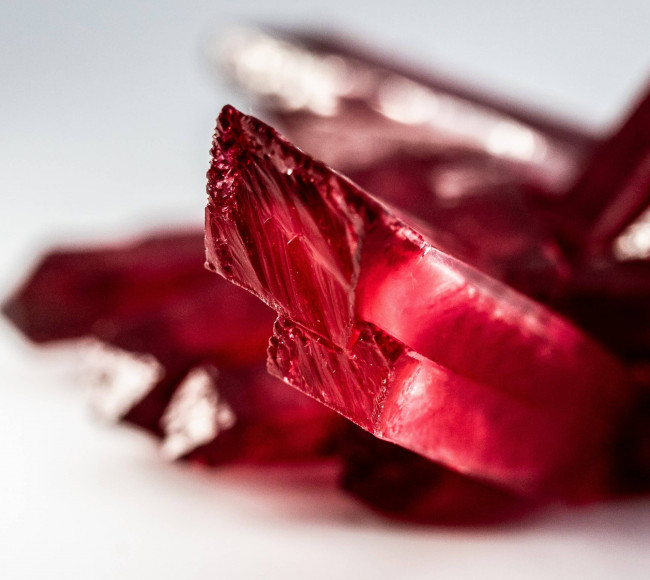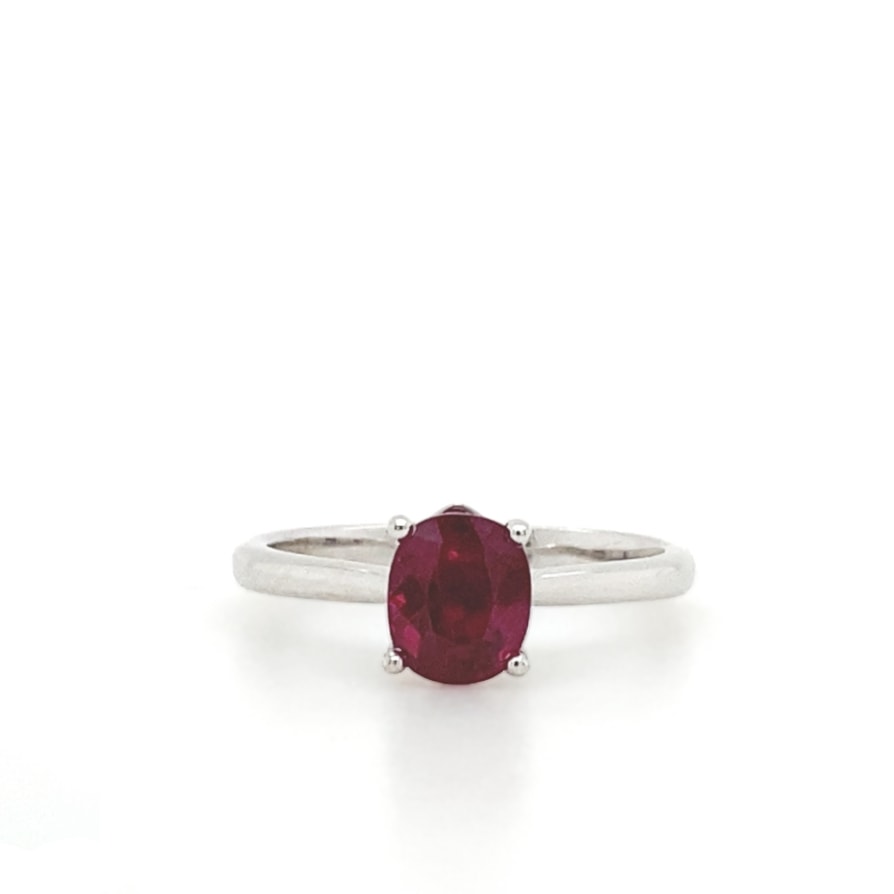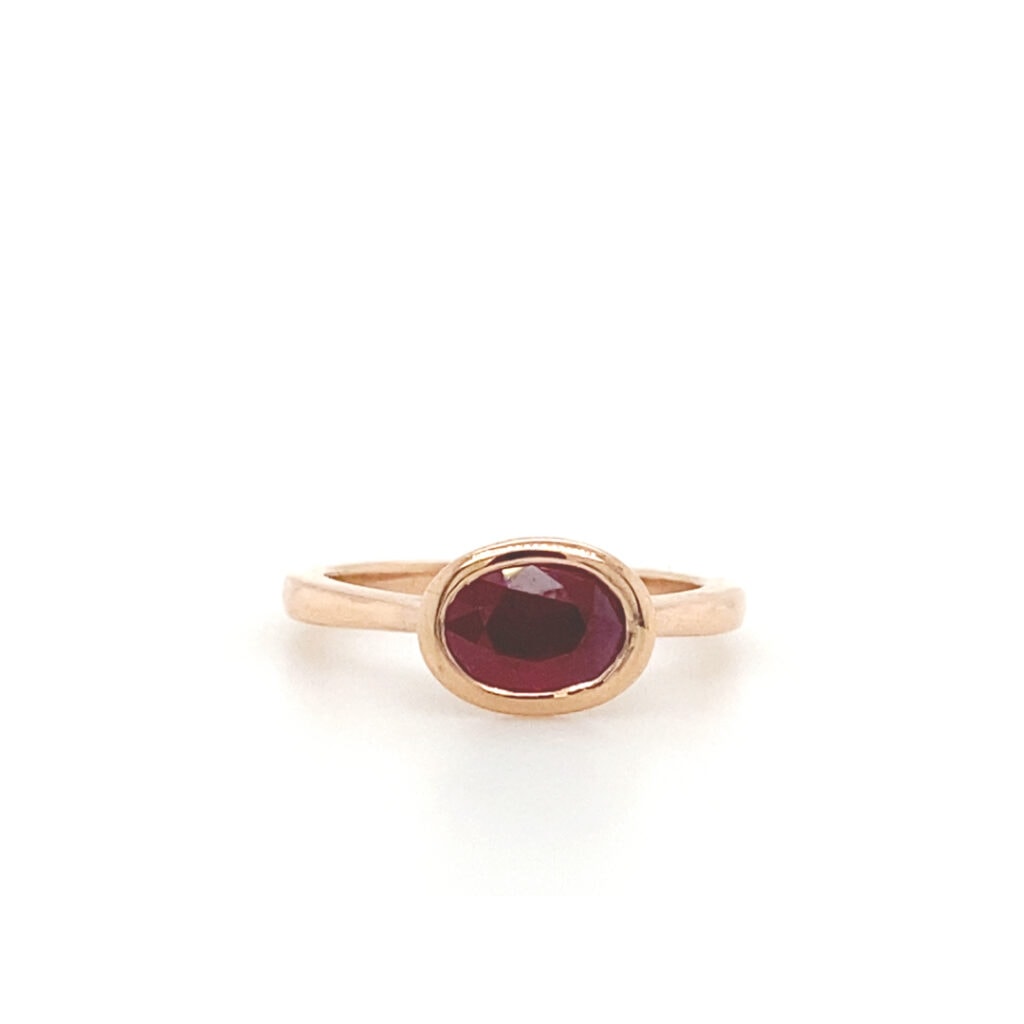
Table of Contents
The ruby is the birthstone for those born in July. July’s birthstone usually appears bright red, though stones with a darker purple or lighter pink hue can also be found. Prized for centuries, rubies are one of the traditional Cardinal Gems, along with diamonds, amethyst, sapphires, and emeralds.
The ruby birthstone represents wealth, happiness, passion, courage, and vitality.
The Origins of the Ruby, July’s Birthstone
The name Ruby comes from the Latin Rubeus, which means red. It is a variety of the mineral corundum, an aluminum oxide with traces of chromium or vanadium that give it its reddish color. Their red color means that they have long been associated with blood, passion, life-giving, healing, and romance.
Rubies have a long history of use, dating back thousands of years. Long ago, rubies were worn by Burmese warriors since they believed it protected them from all harm. In places like China and India, rubies were a favorite gem to affix to armor, sword scabbards, and horse harnesses to bring both mount and rider good fortune.
The ancient Sanskrit word for ruby was ratnaraj, meaning “king of gems,” owing to their being reserved for nobility. Rubies are even mentioned in the Bible, appearing in the Book of Exodus, the Book of Proverbs, and elsewhere.

Classic Ruby Solitaire Engagement Ring
Looking for an engagement ring that is classic and timeless? Look no further than this gorgeous Classic Ruby Solitaire Engagement Ring. This ring features a stunning oval ruby center stone, making your special someone swoon. The ruby symbolizes love and passion, making it the perfect engagement ring.
Set in beautiful 14k white gold, this ring is truly exquisite. It comes in size 6 3/4 but can be resized to fit your needs. Don’t wait any longer. Order this ring today and start your happily ever after!
History of July’s birthstone
Rubies have been found in deposits ranging from Greenland to Australia, but they are most commonly associated with the country of Myanmar (formerly known as Burma), which contains some of the oldest recorded instances of ruby mining.
From mines in Burma and ancient India, these precious gems would be carried throughout Asia and into Europe through trade routes established by the Romans. They have been used as currency, jewelry, and as talismans against evil spirits and bad luck – sometimes even being buried under the foundations of houses to bring prosperity to its occupants.
Where are rubies Found?
Today, the majority of rubies come from Myanmar, although they are also mined in Thailand, Cambodia, India, and Vietnam. More recently, significant deposits have been found in such diverse places as Greenland, Pakistan, and Mozambique, which have become an essential source of ruby mines since 2009.
When mining for rubies, workers dig down to layers of gravel where the gems occur and then use broad screens to filter and wash out the silt and pick out promising stones.

East-West Bezel-Set Ruby Engagement Ring
Looking for something extraordinary? This dazzling east-west design ring features a spectacular bezel setting with an oval ruby and 12 round diamonds. Expertly crafted in rose gold, this ring is sure to impress.
Color and Appearance of the ruby
The most prized ruby is a vibrant, deep blood-red color – but there are many other shades that can be found, including pinkish reds with orange undertones (“pigeon blood”), deep burgundy tones like those in garnets, or purple hues reminiscent of sapphires.
The coloration of a ruby depends on the type of rock in which it was formed; those formed in marble, for instance, have lower iron content and therefore a more brilliant red hue, while rubies from basalt deposits have a darker, less reflective coloration.
Rubies can be cut and polished into various sizes and shapes, such as ovals, spheres, bars, or even hearts. Some rubies are legendary for their size, brilliance, rarity, and cost: the Sunrise Ruby, for instance, is the world’s most expensive non-diamond gemstone, weighing a mere 5.1 grams but sold for over $30 million US dollars at auction.
The Liberty Bell Ruby, at four pounds, the largest mined natural ruby in the world, was sculpted into the shape of the Liberty Bell and studded with diamonds. Tragically, it was stolen in a heist in 2011 and may be lost forever.
Scientific and Physical Properties of ruby birthstone
The chemical composition of the ruby is aluminum oxide (Al₂O₃) with traces of the element chromium, which gives it its red coloration. It has a hardness on the Mohs scale of nine, making it very durable and scratch-resistant. It is second only to the diamond in terms of hardness.
Rubies are also comparatively light for a precious stone, having less relative density than other gems. They also refract light wonderfully, having a refractive index of around 1.76, meaning even darker-colored gems catch and sparkle under direct light. In fact, ruby was used in the creation of the first optical laser in 1960.
What are the benefits of wearing rubies?
Rubies are not only attractive but also tough enough for everyday wear as well because their hardness makes them resistant to scratches (and chips) while being lightweight enough that even children can wear them.
Ruby Birthstone Jewelry Care and Maintenance
As with all jewelry, it is important to take care of your ruby, July’s birthstone pieces in order to prolong their life. Here are a few tips:
- Rubies should not be exposed to harsh chemicals such as chlorine or bleach.
- Don’t wear them while doing manual labor or any other activity that could potentially cause damage.
- Store them in a cloth bag or box when not being worn to prevent scratches.
- Have them professionally inspected and cleaned every year to remove any built-up dirt or oil from the stone.
When Should You Offer Ruby Jewelry to Someone?
The ruby is most often associated with love and passion, making it an ideal present for weddings and romantic occasions. Traditionally, rubies are also given at 15th and 40th-year wedding anniversaries.
Ruby necklaces, earrings, and rings are all popular choices when it comes to ruby jewelry. You can also find pendants, bracelets, and brooches with the beautiful red gemstone.
In Summary
In conclusion, July’s birthstones are a unique gem that is not only beautiful but durable as well. Its fiery red color and high refractivity mean that it continues to be sought after as a symbol of love, passion, romance, vitality, and strength. An iconic and enduring symbol, rubies are the perfect accents for the loved one in your life, and with a bit of care and maintenance, they can last a lifetime.
Learn about August Birthstones!
